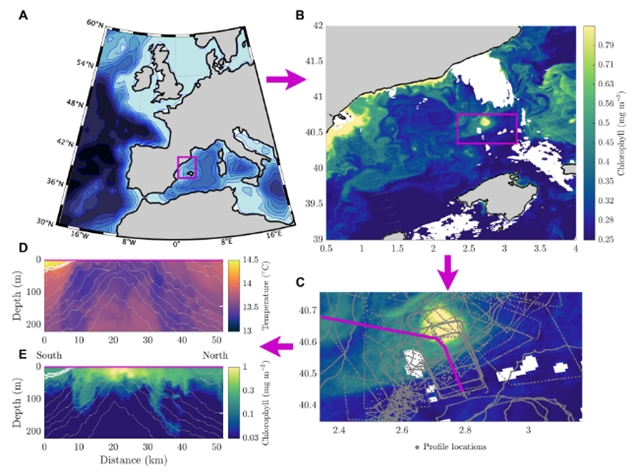
地球的海洋包含大量的气旋涡旋,直径10到25公里,在气候模拟中无法解决。
然而,由于这些特征体积小,进化速度快,研究组缺乏对它们的观察。他们提供了一个这样的气旋涡旋的原位观测,其中心有强烈的叶绿素,因为它在几天内自发地分裂成两个较小的气旋涡旋。这种分裂以每天60米的垂直速度将地表水快速输送到深海,主要从碳浓度最大的漩涡中心开始,促进了浮游植物碳向深度的有效转移,即在混合良好、阳光照射的表层以下。研究组在一个理想的海洋模型中重现了分裂过程,发现分裂是由初始椭圆涡的形状、大小和强度控制的。他们的观察揭示了上层海洋俯冲的机制,并强调了量化其全球普遍性的必要性。
附:英文原文
Title: Observations of a splitting ocean cyclone resulting in subduction of surface waters
Author: Leo Middleton, Weiguang Wu, T. M. Shaun Johnston, Daniel R. Tarry, J. Thomas Farrar, Pierre-Marie Poulain, Tamay M. zgkmen, Andrey Y. Shcherbina, Ananda Pascual, Craig L. McNeill, Malek Belgacem, Maristella Berta, Kathleen Abbott, Alexandra Z. Worden, Fabian Wittmers, Alex Kinsella, Luca R. Centurioni, Verena Hormann, Eugenio Cutolo, Joaquín Tintoré, Simón Ruiz, Benjamín Casas, Helena Cheslack, CALYPSO Collaboration, Eric A. D’Asaro, Amala Mahadevan
Issue&Volume: 2025-07-25
Abstract: Earth’s oceans contain large numbers of cyclonic eddies, 10 to 25 kilometers in diameter and unresolved in climate simulations. However, we lack observations of these features due to their small size and fast evolution. Here, we present in situ observations of one such cyclonic eddy with intense chlorophyll at its center as it spontaneously splits into two smaller cyclonic eddies over a few days. This splitting rapidly transports surface waters to depth, with sustained vertical velocities of 60 meters per day, primarily from the center of the eddy where carbon concentrations are largest, facilitating efficient transfer of phytoplankton carbon to depth, below the well-mixed, sunlit surface layer. We reproduce the splitting process in an idealized ocean model and find that splitting is controlled by the initial elliptical eddy shape, size, and intensity. Our observations uncover a mechanism for subduction in the upper ocean and highlight the need for quantifying its global prevalence.
DOI: adu3221
Source: https://www.science.org/doi/10.1126/sciadv.adu3221
